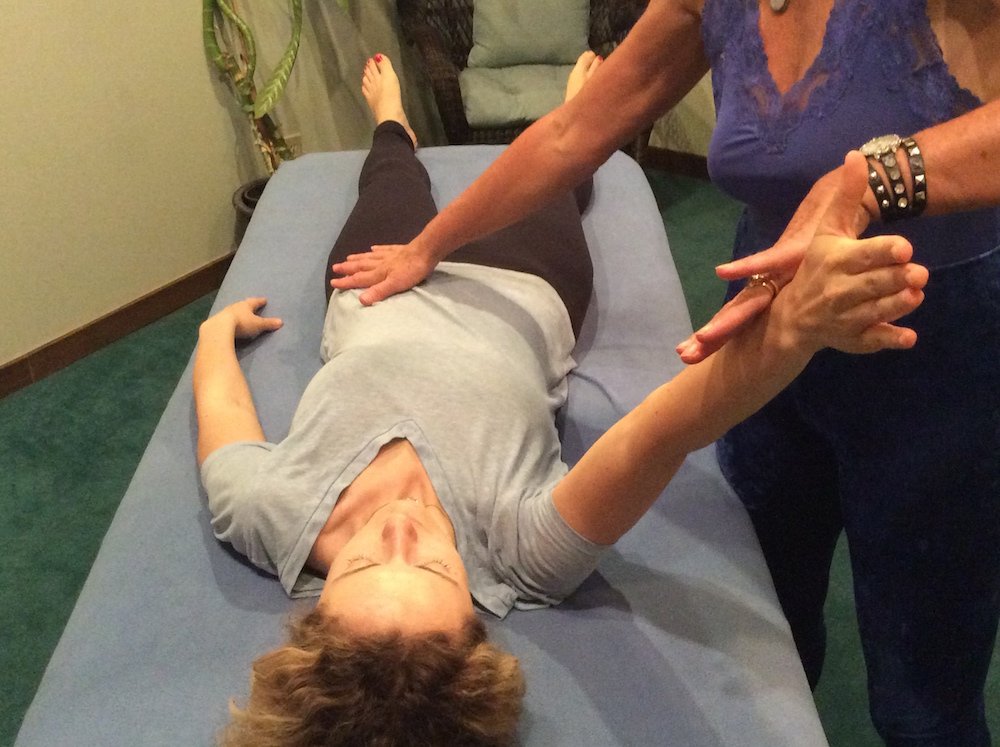History of NMR

History of Neuromuscular Reprogramming
Like all bodywork therapies that have proliferated in the last 80 years, NMR has a history and a source. NeuroMuscular Reprogramming is a further application of the meridian and muscle therapies taught by John Thie, DC through Touch for Health.
My first introduction to the idea that one could use muscle testing to address the complexity of stored muscle memory governing our relationships of muscle coordination was in a short class called the Touch for Health Update in 1977. The concept of Neuromuscular Reactive Relationships came from that workshop and likely from the chiropractic profession and possibly osteopathy before that.
Many people contributed to the development of the NMR protocols. As we used it in our private practices we discovered the common patterns predictable in biomechanical use of the body in standing and function, in sport and dance and daily life. All of the teachers of the course over the years contributed to the content of the manual, most notably Gale Ulvang, David Weinstock, Howard Nemerov and Dana Arevalo.

The Original Manual

Anterior and Posterior Shoulder

Shoulder Diagnosis

NMR Protocols
Other modalities have sprung off from NMR, such as Neurokinetic Therapy presented by David Weinstock, and the Nemerov Technique of Howard Nemerov. David, as a teacher and former partner in Alive & Well!, began teaching NMR for me in 1990. Howard Nemerov assisted many courses and helped write the initial NMR Manual, pictures from that original work are posted on the NeuroMuscular-Reprogramming.com website. Joseph Schwartz suggested the name NeuroMuscular Reprogramming, which is an apt description of what it does and it was he who dug up the background on the Hierarchy of Motor Control by Vernon Brooks.
Once I began teaching it, there was a lot of excitement about this innovation that I had been developing over 10 years of private practice. As more and more people learned it, each of us developed it in our own unique ways, melding it with other knowledge to evolve ever more effective approaches to problem solving motor coordination inefficiencies. Many, like Joseph Schwartz and Ann Watkins, went on to develop work that eventually came to have an entirely different name.

NMR global understanding benefits from the same muscle/meridian correspondence outlined in Touch for Health and its holistic understanding of interconnecting body systems through acupressure theory and basic neuromuscular physiology are now wed to stress and trauma alleviation techniques learned from Educational Kinesiology.
NMR has travelled to Vermont, New Jersey, Seattle, North Dakota and North Carolina where PT’s, athletic trainers and bodyworkers incorporated this modality into their work with clients. Graduates of the 72 hour professional training are scattered from Vancouver, Canada to Florida.
My own further evolution of NeuroMuscular Reprogramming has lead to the essential need to incorporate the neurologically mediated survival response system into the overall strategy necessary for reprogramming the human body and the musculoskeletal system as the body cannot learn new coordination information when in a state of shock or fear. As a more holistic view of accident and trauma is coming together with ‘medical massage’ (clinical massage therapy), physical therapy and fitness training, we are beginning to see a holistic understanding the will enable the body’s full capacity for self correction. This is indeed an inspiring moment for the field of medicine!

